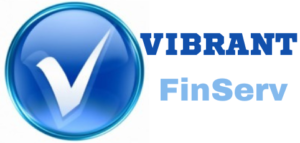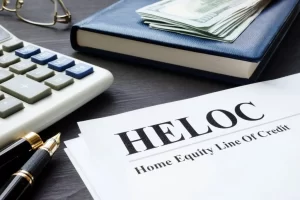Introduction
A home equity line of credit (HELOC) is a flexible financial tool that allows homeowners to borrow against the equity in their homes. It can be used for various purposes, such as home improvements, debt consolidation, or emergency expenses. Understanding how to use a HELOC effectively can help homeowners manage their finances wisely and avoid potential pitfalls.
What is a Home Equity Line of Credit (HELOC)?
A HELOC is a revolving credit line secured by your home’s equity. Unlike a home equity loan, which provides a lump sum, a HELOC works like a credit card—you borrow as needed up to a set limit and repay over time.
Benefits of Using a HELOC
- Flexible Borrowing: Withdraw funds as needed rather than receiving a lump sum.
- Lower Interest Rates: Compared to credit cards or personal loans, HELOCs often have lower interest rates.
- Tax Benefits: Interest may be tax-deductible if used for home improvements.
- Emergency Fund: Provides a financial cushion for unexpected expenses.
- Debt Consolidation: Can be used to pay off high-interest debt at a lower rate.
Step-by-Step Guide to Using a HELOC
1: Determine Your Eligibility
- Check your home equity—most lenders require at least 15-20% equity.
- Review your credit score (typically 620+ is preferred).
- Calculate your debt-to-income (DTI) ratio (under 43% is ideal).
- Ensure you meet lender-specific requirements.
2: Shop for the Best HELOC Lender
- Compare interest rates, terms, and fees from multiple lenders.
- Look for introductory rate offers and repayment flexibility.
- Consider credit unions, banks, and online lenders.
В 3: Apply for a HELOC
- Submit an application with financial documents such as:
- Proof of income (pay stubs, tax returns)
- Home valuation report
- Credit history report
- The lender will assess your home’s value and your financial profile.
В 4: Understand the HELOC Structure
A HELOC has two phases:
- Draw Period (5-10 years): You can borrow funds as needed and make interest-only payments.
- Repayment Period (10-20 years): You repay the principal and interest, typically in fixed monthly payments.
В 5: Use the Funds Wisely
- Home Improvements: Increase property value with renovations.
- Debt Consolidation: Pay off high-interest credit card debt.
- Education Costs: Fund college tuition or other educational expenses.
- Emergency Expenses: Cover medical bills or unexpected repairs.
- Investment Opportunities: Use for real estate or business investments cautiously.
6: Make Smart Repayment Decisions
- Pay more than the minimum to reduce overall interest.
- Avoid using HELOC funds for non-essential purchases.
- Monitor your spending and stay within budget.
Usage of HELOC
- Short-Term Needs: Ideal for large expenses that will be paid off relatively quickly.
- Long-Term Planning: Suitable for major financial goals requiring gradual funding.
- Business Investments: Entrepreneurs may use HELOCs to fund startups or expansion.
Limitations of HELOC
- Risk of Foreclosure: Your home serves as collateral.
- Variable Interest Rates: Rates can increase over time.
- Potential Overspending: Easy access to funds may lead to excessive debt.
- Market Fluctuations: Home values can drop, reducing available equity.
Cooperative Table for HELOC Considerations
| Factor | Importance | Considerations |
|---|---|---|
| Interest Rate | High | May be variable, impacting cost |
| Loan-to-Value Ratio | High | Affects borrowing limit |
| Credit Score | High | Influences approval and interest rates |
| Draw Period | Medium | Access to funds for a set timeframe |
| Repayment Period | High | Principal and interest payments required later |
Conclusion
A HELOC can be a valuable financial tool when used responsibly. It offers flexible borrowing options, competitive interest rates, and potential tax advantages. However, it also carries risks, including variable interest rates and the possibility of foreclosure. By understanding the terms, using funds wisely, and making strategic repayments, homeowners can maximize the benefits of a HELOC while minimizing risks.
20 Frequently Asked Questions (FAQs)
- What is the main difference between a HELOC and a home equity loan? A HELOC is a revolving line of credit, while a home equity loan is a lump sum with fixed payments.
- How much can I borrow with a HELOC? Typically, up to 85% of your home’s appraised value minus your mortgage balance.
- Can I use a HELOC for anything? Yes, but responsible usage (e.g., home improvements, debt consolidation) is recommended.
- Are HELOC interest rates fixed or variable? Most HELOCs have variable rates, though some lenders offer fixed-rate options.
- Is HELOC interest tax-deductible? Yes, if funds are used for home improvements.
- What happens if I don’t repay my HELOC? You risk foreclosure since your home is collateral.
- Can I refinance my HELOC? Yes, you can refinance into a fixed-rate loan or a new HELOC.
- How long does the HELOC approval process take? Typically, 2-6 weeks, depending on lender requirements.
- What is the minimum credit score for a HELOC? Most lenders require a score of 620 or higher.
- Can I pay off my HELOC early? Yes, but check for early repayment fees.
For further details access our website https://vibrantfinserv.com/
Contact:В В В В 8130555124, 8130045124
Whatsapp:В В https://wa.me/918130555124
Mail ID:В В В В В В operations@vibrantfinserv.com
Web Link:В В В https://vibrantfinserv.com
FB Link:В В В В В В https://fb.me/vibrantfinserv
Insta Link:В В https://www.instagram.com/vibrantfinserv2/В

